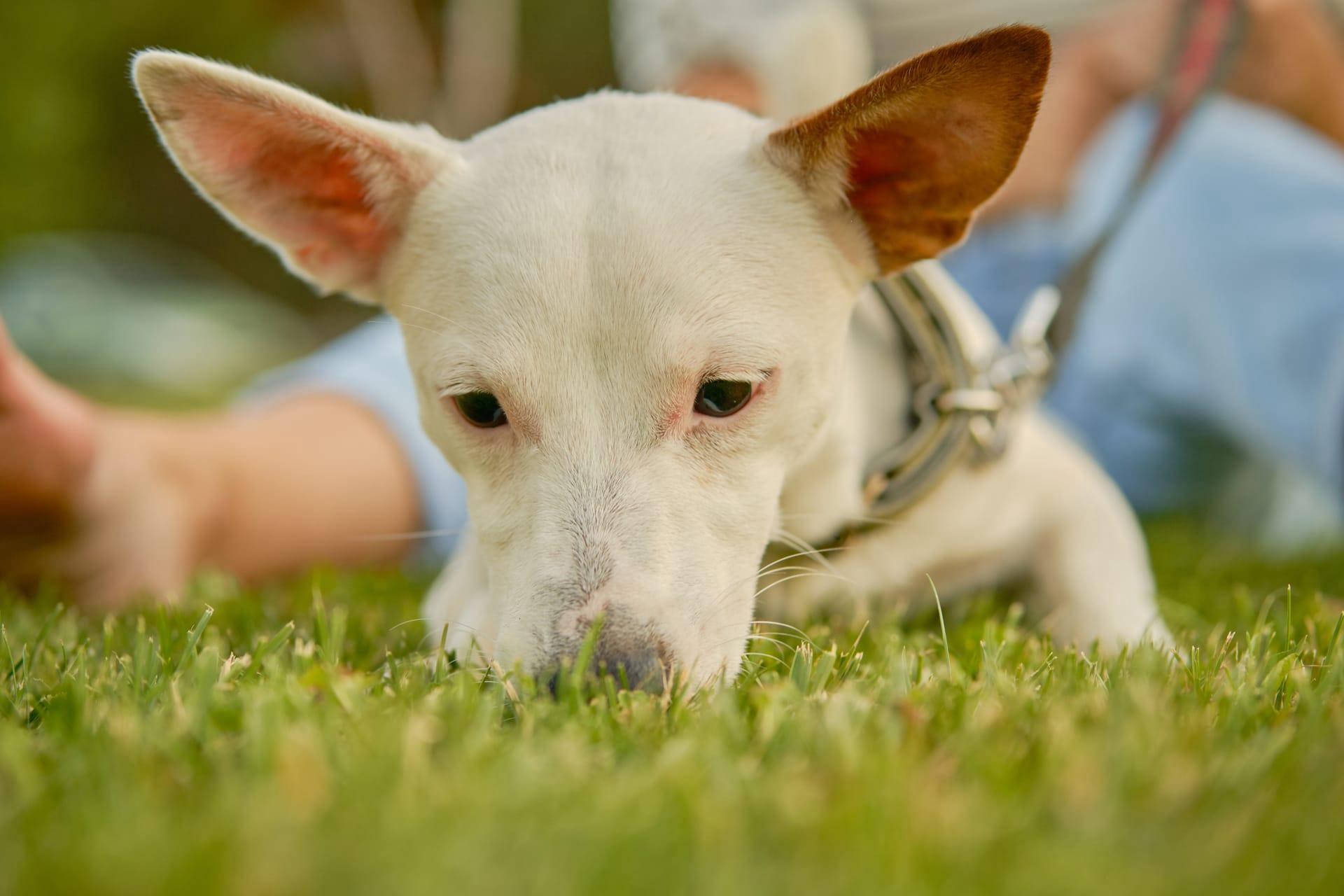Bull Terrier Characteristics
- Home /
- Mini Encyclopedia /
- Animal /
- Bull Terrier Characteristics
1
Bull Terriers are a breed known for their muscular build, distinctive egg-shaped head, and small, triangular eyes that sparkle with mischief. Typically, males stand about 21 to 22 inches tall and weigh between 50 to 70 pounds, while females are slightly smaller. These dogs have a short, dense coat that can be white, brindle, or a combination of the two. Bull Terriers have an impressive lifespan for their size, often living between 12 to 13 years, which is a testament to their robust health when properly cared for.
The most remarkable organ of a Bull Terrier is undoubtedly its nose. This isn't just about the snout's shape or size, but its functionality. A Bull Terrier's nose is highly sensitive, capable of distinguishing a vast array of scents. This sensitivity is not just for show; it's a critical aspect of their hunting heritage, allowing them to track scents over long distances and even differentiate between various smells. This keen sense of smell is a cornerstone of the Bull Terrier's abilities, making it an exceptional breed for activities that require scent work.

2
Question: Why do Bull Terriers have such a unique, egg-shaped head?
Answer: The distinctive egg-shaped head of the Bull Terrier is a result of selective breeding. This unique head shape, combined with their small, triangular eyes, gives them a striking appearance. The structure of their skull and jaw also contributes to their strong bite, a feature that was historically valued for their role in bull-baiting and later in ratting. The shape of their head is not just aesthetic; it's a physical characteristic that has evolved over time, reflecting the breed's history and the functionalities required in their early development.

3
Bull Terriers are energetic and require regular, vigorous exercise to maintain their physical and mental health. They thrive on activities like long walks, runs, and play sessions that stimulate both their bodies and minds. This breed possesses a high level of endurance and can participate in dog sports such as agility, obedience, and even weight pulling, making them well-rounded athletes.
When it comes to eating, Bull Terriers are not particularly fussy eaters, but they do have robust appetites. A balanced diet rich in proteins and nutrients is essential for maintaining their muscular physique and energy levels. It's crucial to monitor their food intake closely, as they can be prone to obesity if overfed or given too many treats. Portion control and a consistent feeding schedule, along with high-quality dog food, are key to keeping a Bull Terrier healthy and happy.

4
Bull Terriers adapt well to various living environments but thrive in spaces where they can move freely. They do well in homes with yards but can adjust to apartment living if provided with enough exercise. They're social animals that need human interaction and do not like being left alone for long periods. Their adaptable nature makes them suitable for diverse climates, but they should always have access to shelter, water, and a comfortable resting area.
Reproduction in Bull Terriers follows the general canine pattern, with a gestation period of about 63 days. They are known for having litters of 4 to 6 puppies on average. Breeders should conduct health screenings for common genetic issues like heart and kidney problems to ensure the health of the puppies. Socialization and training from an early age are crucial for Bull Terrier puppies to grow into well-adjusted and behaved adults.

5
Book: "The Bull Terrier in Art, Performance, and Society" explores the historical significance of Bull Terriers in various cultural contexts. Written by British author Henry Jameson in the late 1990s, the book delves into the breed's representation in art and literature, their roles in performance—from circuses to television—and their impact on societal perceptions of dog breeds. Jameson's work is a comprehensive examination of how Bull Terriers have been woven into the fabric of cultural history, showcasing their versatility and enduring appeal.
Book: "Bull Terrier Training Essentials" by American canine behaviorist Sarah K. Lincoln, published in the early 2000s, offers practical advice for Bull Terrier owners. Lincoln combines her extensive experience with the breed and her expertise in dog behavior to provide a guide that covers training basics, from obedience to agility, tailored specifically to the unique traits of Bull Terriers. Her book is a valuable resource for both new and experienced owners, emphasizing positive reinforcement techniques and the importance of understanding the breed's characteristics for effective training.